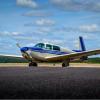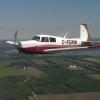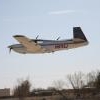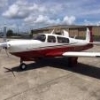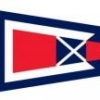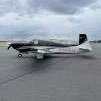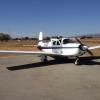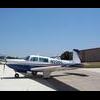Leaderboard
Popular Content
Showing content with the highest reputation on 10/12/2014 in all areas
-
6 points
-
Here is a new video I finally got around to making. I recommend watching in HD. Hope you guys enjoy! https://www.youtube.com/watch?v=7vZisaW_5B8 BTW, how can you embed videos in this forum?? EDIT: Here is a version that can be viewed on mobile devices: https://vimeo.com/849200192 points
-
2 points
-
In my first 75 hours, only 4 of them have been with 3 seats occupied. And three of those hours were during my initial 5 hours for insurance purposes. I gave $48k and got a C with all the speed mods, 530W, STech30/Alt, HSI, etc. Every time I fly I'm glad I have my well equipped C and not a lesser equipped E, F or J.2 points
-
I have a copy of an engine emissions test report that NASA performed for the EPA in 1976.(report TM X-73500) They studied a 160 HP Lycoming engine extensively to see what effects humidity, air temperature, fuel mixture, and ignition timing had on emissions. A by product of the study was a 206 page volume of fuel consumption and horsepower statistics. While the focus was on emissions, they gathered extensive data on BSFC and HP under a wide range of conditions. Interestingly, while there are performance losses when timing is retarded from spec, there are little or no gains when advancing the timing beyond spec. They basically confirmed that 25 BTDC was ideal for that engine. Advancing the timing to 30 BTDC had virtually no benefit. Retarding the timing to 20 degrees cut HP from 157, down to 148. Advancing it to 30 degrees only raised it from 156, to 157. The main thing to take from this, is that keeping ignition timing precisely at the specification is more important that most people realize. That means maintaining the ignition system with a focus on the timing event inside the magneto, and from the magneto to the engine. Internal timing is important to achieve the dwell time needed for coil saturation and optimum spark output. Optimum spark is both high voltage and long duration. External timing puts the spark to the plug at the correct moment. Most mechanics do not understand the difference in these two events. It's poor maintenance that causes poor performance, not necessarily the fact that the magnetos have a fixed timing event or are 1930's tractor technology. I suspect that the majority of magneto-equipped engines with more than 500 hours on them have incorrect timing. Even when the external timing is set correctly, the internal timing can be off several degrees, resulting in loss of performance. Combine this with poor quality spark plugs like Champion massive electrode plugs, and you can be losing 10-15 HP. Add in carburetor heat leaks, poor cylinder baffling, and fuel system discrepancies, and you create a real dog. Controlling the engine fuel mixture and timing with a closed-loop electronic control system is the way to achieve the best performance. We're probably farther from that goal than ever, since the Aerosance FADEC seems to have gone nowhere since 1998. This system uses two different timing curves and adds them based on conditions. An RPM curve, with a max of 26.5 degrees at 2700 RPM.. And a vacuum curve, with a maximum of 18.5 degrees at 16" MP. They are added together, but there are no conditions under which you could get all 45 degrees of advance. Under typical conditions you may get 28 total. You would have to be at 16"MP and 2700 RPM to get all available advance. It drops off steeply after that. If you apply the EIS timing curve to a typical Lycoming performance cruise power setting of 24" MP and 2400 RPM, you get ZERO vacuum advance, and only 24 degrees BTDC because you have yet to hit 2500 RPM, where the RPM advance curve equals the OEM timing setting of 25 BTDC. To get any benefit from the vacuum advance curve, you have to be below 75 percent power. It appears that settings of 55 to 65 percent power will allow total advance to equal or exceed the OEM setting of 25 BTDC. At 22"MP and 2300 RPM, you get 23 BTDC rpm advance plus 4.5D for a total of 27.5 BTDC timing. If you go to 23/2300, you get 24+2.25 for 26.25 BTDC total timing. Some Comamche 250/260 pilots use 22"MP/2100 RPM cruise setting, giving 22 degrees RPM + 4.5 vacuum advance for 26.5 total timing. And don't forget as currently configured, this system gives ZERO vacuum advance above 24"MP. So it is useless on a turbo. The highest amount of advance will occur under high RPM and low MP conditions. For example, at 10,000 feet you might have 20" MP and 2500 RPM. Under these conditions you will get 34 BTDC total timing. This is where you should see the maximum benefit. Low MP high RPM cruise flight above 8000 feet. The least amount of advance, sometimes LESS than OEM, will occur during high MP conditions such as takeoff and climb. This is according to the Electroair charts: http://www.aircraftspruce.com/catalog/eppages/electroair.php It will be interesting to see how Electroair fares compared to the LASAR system that failed in the market place. Maintenance was part of that, because parts were ridiculously expensive and sometimes unobtainable. Buried in the Electroair STC Instructions for Continued Airworthiness: Every 1000 hours or 5 years, replace the ignition harness. It can't be deferred because as an STC ICA it is an Airworthiness Limitation. Any idea what that will cost? They could set the price at $1000 and you could choose to buy it, or ground the plane. This system uses two different timing curves and adds them based on conditions. An RPM curve, with a max of 26.5 degrees at 2700 RPM.. And a vacuum curve, with a maximum of 18.5 degrees at 16" MP. They are added together, but there are no conditions under which you could get all 45 degrees of advance. Under typical conditions you may get 28 total. You would have to be at 16"MP and 2700 RPM to get all available advance. It drops off steeply after that. If you apply the EIS timing curve to a typical Lycoming performance cruise power setting of 24" MP and 2400 RPM, you get ZERO vacuum advance, and only 24 degrees BTDC because you have yet to hit 2500 RPM, where the RPM advance curve equals the OEM timing setting of 25 BTDC. To get any benefit from the vacuum advance curve, you have to be below 75 percent power. It appears that settings of 55 to 65 percent power will allow total advance to equal or exceed the OEM setting of 25 BTDC. At 22"MP and 2300 RPM, you get 23 BTDC rpm advance plus 4.5D for a total of 27.5 BTDC timing. If you go to 23/2300, you get 24+2.25 for 26.25 BTDC total timing. Some Comamche 250/260 pilots use 22"MP/2100 RPM cruise setting, giving 22 degrees RPM + 4.5 vacuum advance for 26.5 total timing. That's a whopping 1.5 degrees advance, which NASA says gives you a .0064% HP increase. If you go over square, you lose the vacuum advance and are back to 24 BTDC, so you LOSE a degree of timing. Oversquare settings like 24/2300 and 23/2200 are known to produce good performance, long top cylinder life, and lower vibration. Using them essentially cancels the vacuum portion of the EIS timing advance, and with good reason but without thinking this all the way through. As cylinder BMEP rises under high MP and lower RPM combinations, the chance of detonation increases. The simplest way to avoid this is to retard timing under those specific conditions, or to find the happy medium under all conditions. That happy medium is the OEM advance setting. But this system appears to retard the timing below the OEM setting in many cases, unnecessarily. This might be beneficial to high compression or turbo engines that need more detonation margin or want the ability to operate on lower octane fuel. But typical Lycomings only need 91 octane and so the detonation margin with 100LL is huge. And don't forget as currently configured, this system gives ZERO vacuum advance above 24"MP. So it is useless on a turbo. The highest amount of advance will occur under high RPM and low MP conditions. For example, at 10,000 feet you might have 20" MP and 2500 RPM. Under these conditions you will get 34 BTDC total timing. This is where you should see the maximum benefit. Low MP high RPM cruise flight above 8000 feet. The least amount of advance, sometimes LESS than OEM, will occur during high MP conditions such as takeoff and climb. This is according to the Electroair charts: http://www.aircraftspruce.com/catalog/eppages/electroair.php The numbers I have seen posted don't appear to be any better than book performance numbers for a new plane. It appears that most of these retrofits are on 30-50 year old planes that were driven by upcoming repairs or dissatisfaction with constantly throwing money at old problems. So we may simply be seeing "performance improvements" that would come from stock new replacement parts, installed by competent mechanics. For example, I flew a completely stock B model Twin Comanche for years that would true at 170 KTAS at 9000 feet on 15.4 GPH. No speed mods whatsoever, and actually had poor paint and some other drag inducing items costing a few knots I'm certain. But good engine maintenance made it efficient in spite of the aerodynamic challenges. I'll wait to see how this evolves before jumping in. A better timing curve is needed IMHO. At the moment I see no benefit for the substantial outlay on my twin, or for my customers. NOTE: In the EA info pages is a note about cylinder Peak Pressure occurring at 11 degrees ATDC. I'm not sure if this is an error or intentional, but all data I have seen indicates optimum PP occurs in a band from 14 to 18 degrees ATDC and it is linked to ignition timing. If PP occurs too soon the engine will be prone to detonation. If too late, it runs hot and loses power. Since converting several engines back to Bendix magnetos with Tempest fine wire plugs, I have had zero lead fouling issues in the lower plugs on O-235, O-320, and O-360 Lycomings that formerly had miserable fouling issues. And with no operational changes. This was after directing the pilots to use Lycoming's recommended shut down procedure. Which is 1000-1100 RPM for one minute, leaned, and then pull the mixture to cut off. That helped a lot but the whole problem was in the crappy Champion spark plugs and Slick magnetos all along. I'm sure the EI will be an improvement in the same manner, but with less maintenance. So if you don't have the $$$ for EI, follow the Lycoming shut down procedure, ditch your Champion plugs, and pay close attention to your magneto's maintenance requirements. So to recap, the best benefits of the EI system are found above 10,000 feet at high rpm (higher than most pilots normally use, such as 2500-2700 rpm), and low manifold pressure. Sort of like trying to coast in first gear...2 points
-
I have many bikes (too many says my co-habitant) and several of them are different kind of folders. My favorite balance of quick fold, fits through the baggage door of my Mooney and still rides as a normal bike is my Montague. It is a full sized 26 inch wheel mountain bike and rides fine off road and rides on road easily and comfortably as any other mtn bike. http://www.westmarine.com/buy/montague--swissbike-x50--P011904521 To fit it through the baggage door both wheels come off and that rear triangle folds underneath the main beam. To keep your airplane clean put everything in a soft case - a BBQ cover from walmart is fine. But I put the wheels through the front door - in wheel bags. (26' wheels will not fit through the baggage door). http://www.totalcycling.com/en/Mavic-Wheel-Bag/m-20814.aspx?gclid=CPLpwcPupcECFbPm7AodUzAAng&utm_source=google&utm_medium=shopping&utm_campaign=UnitedStates Two of these easily fit in a mooney. I have a smaller folder that folds in 15 seconds but its only good for noodling around riding short distances. If I want to ride for say 20 mi I would take my montague. If I want to ride say 80 miles on the road I would take my road bike - which has s&s couplers.2 points
-
I got an email from Mooneyspace with a post from ryoder about electroiar ignition, but it never showed up in the vintage forum. It seems it got los in cyberspace.1 point
-
That thing is a sign that you should immediately take your airplane out of service and ground it until you can tear apart the panel and figure out where it goes. The owner is responsible for the airworthiness and that responsibility should not be relinquished by any means, Mechanically inclined or not. ; )1 point
-
I had the same problem. I rebuilt the fuel selector and it got better. The hiccup happened when the fuel pressure got low. Switching tanks made it different.1 point
-
Sounds like you have identified the problem...? An aging diaphragm in the engine driven fuel pump could be the specific problem. Is there a good way to ground test the fuel pump? If the diaphragm has a split or tear or hole it may leak out a vent at the back of the pump...? Discuss that with your mechanic... As usual, I am a PP, not a mechanic. Best regards, -a-1 point
-
We keep a fair amount of stuff in the back, cover, emergency pack, tools a tow bar and oils and still have enough space for luggage for three. Our short body is perfect for our mission normally just the two of us with luggage in the back and our flight bags on the back seat for quick access. I think you would get the best bang for your buck with an E. I would love the extra hp of the injected motor but honestly I have more faith in an old carburetor than an old injection system. The nice thing about points and carburetors is they fail slowly giving signs that there are problems. whereas injection and electronics usually fail suddenly and completely IMHO.1 point
-
The seat back spacer is a bit shorter and made of aluminum and it would not fall out from behind the panel. I just put everything that falls off in the pouch in the front of the seat. When I'm working on the plane if I need some odd screw or spacer or whatever I usually find it in the pouch.1 point
-
Yes, that's the last estimate I got when I was looking into this a few months ago. There's another thread about this where I mentioned my discussions with Paul Keener at Mooney. They know they have an issue with a fairly significant number of G1000 planes that are in this dilemma. So for now we just keep pushing.1 point
-
My flying buddy always says "climb and maintain 70 degrees" while holding short when it's 115 out.1 point
-
It's probably a spacer. I have come across several where they support a span between the metal sub-structure and a plastic trim piece and where there is a fastener (screw). I have also found a couple that had migrated to nooks and crannies which had probably been dropped during the manufacturing process since it can be a challenge to hold the spacer in place behind a piece of trim while getting the screw through.1 point
-
1 point
-
Gary, I think most Mooneys baggage spills over to the back seats,at least they are then used. I have a long body and once the wife starts filling up the bags the seat behind me becomes storage....still beats most product B's worrying about the moving cg's1 point
-
Another perfect option is the Mobiky Genius. I've been searching for used ones for two years and last month I scored on two. I found one local (dumb luck) for $350 and one on eBay for $350 with $75 shipping from Oregon. You can purchase them new for $700 with free shipping. http://www.foldabikes.com/mobiky/mobiky.html As you can see by the attached pictures, I have two of these great bikes. I can easily fit both of them through the baggage door of my D model. In fact, if I had three of these bikes they would fit in the compartment no issue. Not sure about a fourth but I have a feeling that would be possible. They weigh 30 lbs. each but they are built like tanks. I am a big guy and they have no problem supporting me. I am also 6 foot tall and the seat and handlebars could easily accommodate someone 6 foot 5-6 inches without a problem. They have a three-speed transmission so hills are not a problem. The wheels are 12" but they behave like a road bike. I can't tell you how impressed I am with these. If you want them used, they do exist but you have to actively keep looking for them and be very patient. One came with a bag. I'll be making or purchasing a bag for the other very soon. Sven1 point
-
It's a quality of life thing with the AC. Especially in the summer in the desert/south. Took a T182 with AC from SMO to DTN in late June this year! All I can say was it was really cool! However, The thing was a tank with high DA out of PHX. And that was only with two people! If I lived in Louisiana I'd modify the E with AC. -Matt1 point
-
1 point
-
Thanks guys. Looks like my $175.00 works per my mechanic. I will confirm everything next week . Thanks. Troy1 point
-
Oh brotha - if you only knew how techno-geeked-out some of us get on the bike - I have a lot more instrumentation that on my bikes. Heart rate, speed, cadence, power at the hub in watts, altitude, gps position tracking, temp, yada yada - and all downloadable for later analysis. So I guess I can send my bike ride data off to Mike Busch so he can tell me if I am about to burn a valve?1 point
-
I have an idea the next time I use medexpess, I'll bog it down more than healthcare.gov was...1 point
-
1 point
-
When you are done your plane will look awesome and your arms will look like Popeye's Just remember the part of the plane that is most important to look the best is the top of the left wing!1 point
-
Jimmy and David are great! Bought and sold planes with them and it was painless. If you ever want to make your self feel good about the resale value of your airplane just buy and sell a Mercedes. I don't think it was possible for something to depreciate so much when I sold mine. Planes are great at least you get something back, if you don't plan on holding on to your plane the trick is not putting so much in to it.1 point
-
That is how I was checked out when I learned Mooneys in a '75 F with electric gear. However since I've learned more as an owner, I think it is not a good idea to routinely practice this in the air because of the possible failure modes that can leave the gear stuck up in the wells. If the emergency crank splines are mis-rigged, then it can damage both splines and prevent engagement. IMO now, it is better to practice this on jack stands, with verification that the engagement and dis-engagement work properly.1 point
-
Here is what I have for the right side for a 64E. Change TXT to DXF and import into a CAD program this should work. This should be close. I never used it for the plane but I printed it 1:1 PANEL.txtand test fitted it on paper.1 point

